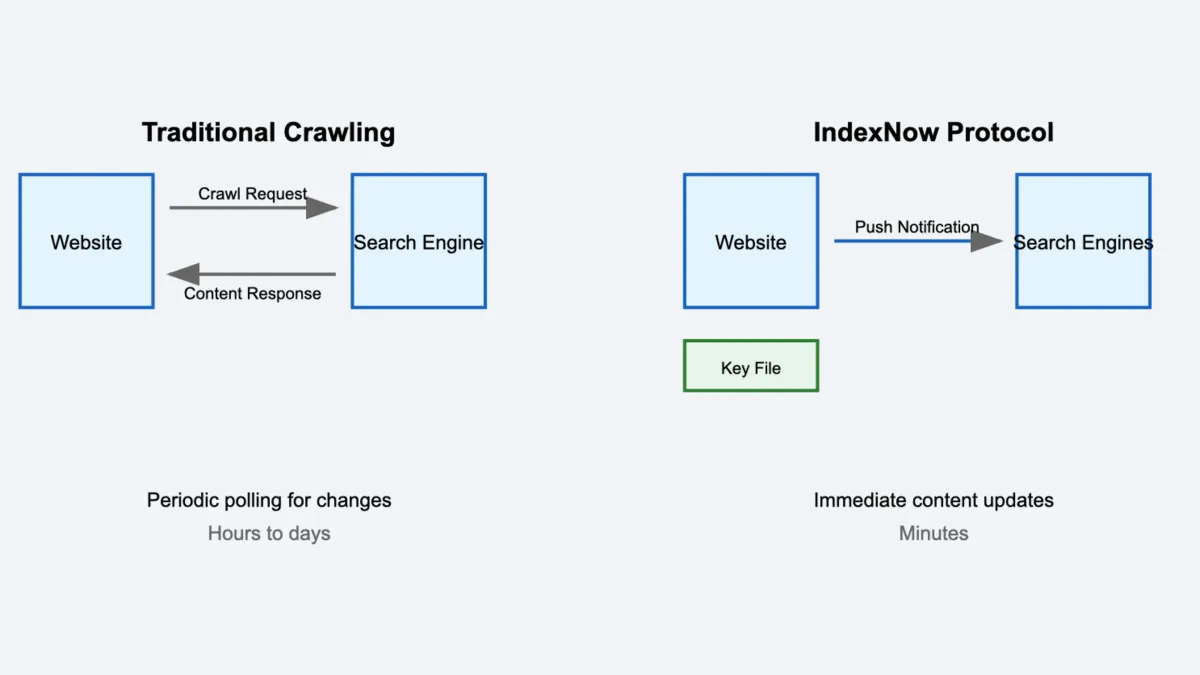Advanced IndexNow Strategies: URL Segmentation and Batching
Introduction to IndexNow
IndexNow is a protocol that allows websites to instantly notify search engines like Bing and Yandex about content changes, facilitating faster indexing and improving SEO efforts. It supports both single URL submissions and batch submissions of up to 10,000 URLs via JSON payloads.
URL Segmentation
Purpose of Segmentation: URL segmentation involves categorizing website pages into logical groups based on specific criteria, such as content type, user engagement, or business goals. This strategy helps in selectively submitting URLs to IndexNow, ensuring that only relevant and high-priority content is indexed promptly.
Implementing Segmentation:
- Identify Key Segments: Determine which segments of your website are most critical for SEO, such as frequently updated blogs or product pages.
- Use Allowlists and Blocklists: Tools like Conductor allow you to create allowlists and blocklists based on URL patterns or segments, ensuring that only desired pages are submitted to IndexNow.
Batching Strategies
Batching Overview: Batching involves submitting multiple URLs at once to optimize the submission process. This approach is efficient for managing large numbers of URLs but should be balanced with the need for timely updates.
Best Practices for Batching:
- Frequency and Volume: Submit URLs in batches but avoid overwhelming the system. Ensure that you only submit URLs that have changed, and do not exceed reasonable limits to avoid HTTP 429 responses.
- Real-Time Updates: For frequently updated content, consider submitting updates in near-real-time rather than batching them. This ensures freshness and relevance in search results.
- JSON Payloads: Use JSON payloads for bulk submissions to efficiently manage large numbers of URLs.
Combining Segmentation and Batching
Integrated Strategy:
- Segment Prioritization: Prioritize segments based on their SEO importance and update frequency.
- Batching Segments: Batch URLs from high-priority segments to ensure timely indexing while managing the submission volume.
- Automation: Automate the submission process using your CMS or custom scripts to streamline the workflow and ensure consistency.
Example Code for Batching
Here's an example of how to submit URLs in batches using Python:
import requests
import json
def submit_urls_to_indexnow(urls, key, host="www.example.com"):
indexnow_endpoint = "https://api.indexnow.org/submit-bulk"
payload = {
"key": key,
"urls": urls,
"host": host
}
headers = {'Content-Type': 'application/json'}
response = requests.post(indexnow_endpoint, data=json.dumps(payload), headers=headers)
return response.status_code
# Example usage
urls_to_submit = [
"https://www.example.com/page1",
"https://www.example.com/page2",
"https://www.example.com/page3"
]
api_key = "YOUR_API_KEY"
status_code = submit_urls_to_indexnow(urls_to_submit, api_key)
if status_code == 200:
print("URLs successfully submitted to IndexNow.")
else:
print(f"Error submitting URLs. Status code: {status_code}")
This code demonstrates how to efficiently manage bulk submissions using JSON payloads, which is crucial for integrating segmentation and batching strategies with IndexNow.





